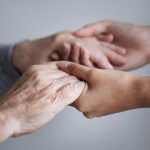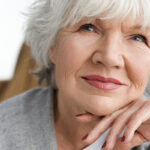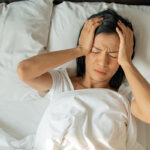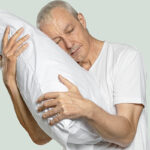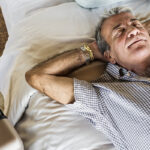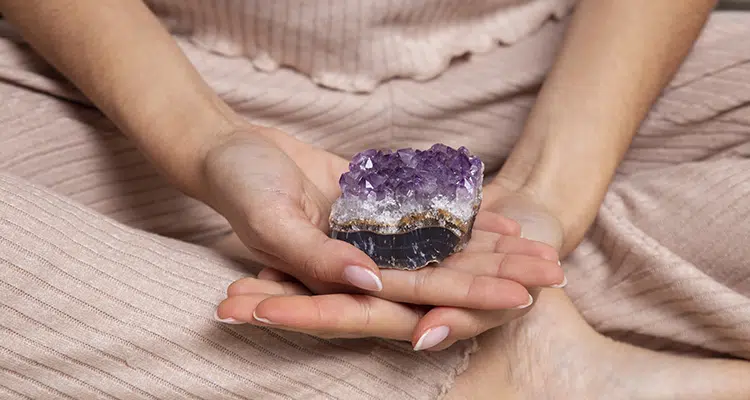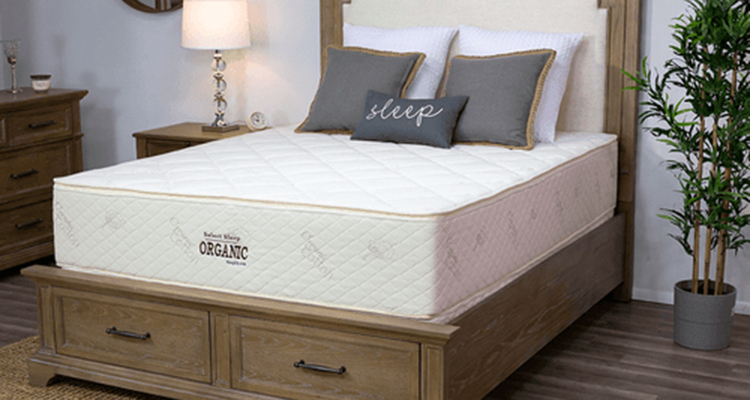The Connection Between Insomnia and the Elderly
Aging is a natural part of life. And with it, comes countless changes both mentally and physically. Older adults are at increased risk of developing a myriad of health issues and medical conditions as their body becomes increasingly weak and less resilient. One such condition is insomnia. While most sleep troubles are triggered by something else, age alone puts you at an increased risk of experiencing sleep disturbances and changes in your sleep patterns. For example, elderly individuals are at increased risk of developing sleep disorders and RLS, a leading cause of insomnia. Your circadian rhythm also changes as you get older, impacting how long and how well you sleep. Many seniors also take medications that treat certain ailments but can cause increased sleep disturbances.
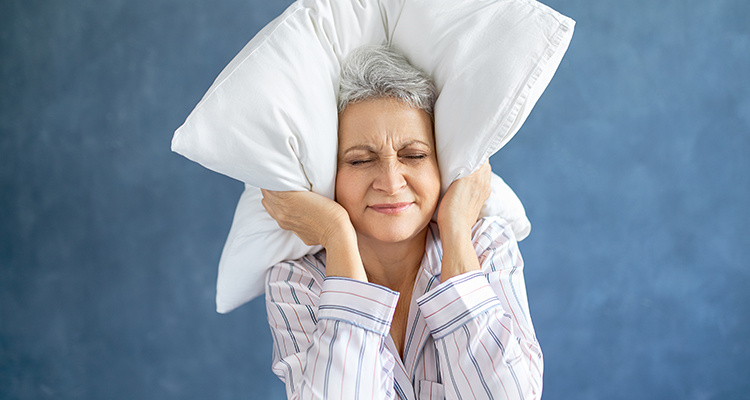
Here we’ll take a closer look at why elderly individuals are at increased risk of developing insomnia and ways to help ease symptoms.
Content
How Aging Affects Sleep
It’s no secret that your quality of sleep naturally deteriorates as you age. Seniors are more prone to waking during the night and often sleepless. It also becomes increasingly difficult to fall back to sleep once awake. One study suggests that by middle age, the average person loses as much as 30 minutes of sleep per night, increasing every decade. Sleep duration and quality are directly related to your overall health and how your body functions, specifically, your circadian rhythm.
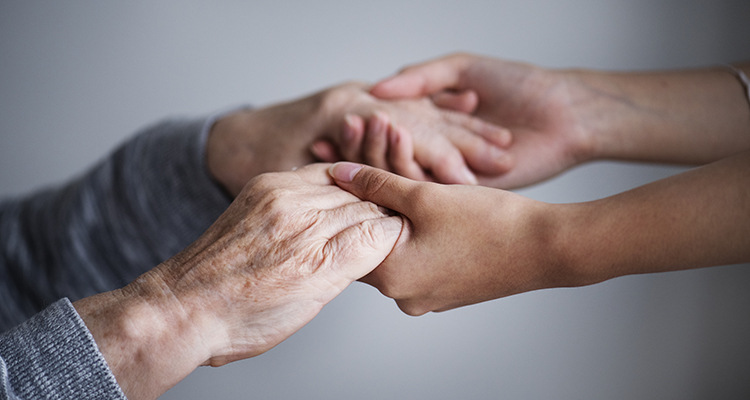
As you age, your body can’t recognize certain circadian rhythms as well, triggering elderly individuals to fall asleep earlier in the night and wake earlier in the morning. Your sleep architecture, or the stages of sleep you go through, also changes with age. Everyone goes through 4 distinct sleep stages, 2 of which are considered “light” sleep and 2 that are deeper, slow-wave sleep. These stages are also known as non-rapid eye movement (NREM) and rapid eye movement (REM). It’s during the latter that your body processes information, stores memories, and performs repairs needed to function in daily life.
Older individuals often spend more time in light sleep and less time in deep, restorative sleep. This increases the risk of frequently waking during the night and feeling confused and less refreshed the next day. This can contribute to daytime drowsiness, confusion, and risk of injury.
Common Causes of Insomnia in the Elderly
Let’s take a closer look at some of the leading causes of insomnia in older adults.

Underlying Medical Conditions
Most cases of insomnia are caused by other underlying medical conditions. This is true for most adults and is especially true in elderly individuals. While primary sleep disorders do exist, it’s much more common for your sleep troubles to have an underlying cause.
Some of the most common health issues that can cause insomnia and disrupt sleep in older individuals include:
- Acid reflux
- Heart failure, chronic obstructive pulmonary disease, and other heart and lung conditions
- Chronic pain associated with osteoarthritis
- Frequent urination at night caused by an overactive bladder or enlarged prostate
- Depression, anxiety, and other mood disorders
- Side effects of medication
- Dementia, Alzheimer’s, Parkinson’s, and other neurodegenerative disorders
By treating these underlying conditions, many elderly patients enjoy better quality sleep and wake to feel more rested. Keep in mind that some medications used to treat these conditions can worsen insomnia symptoms.
Sleep-Related Breathing Disorders
Sleep-related breathing disorders, also known as SRBD is a broad term that describes a wide range of issues related to how well you breathe during sleep.
One of the most common and dangerous SRBD is obstructive sleep apnea (OSA). Both general sleep apnea and OSA cause people to stop breathing periodically throughout the night. In patients with OSA, this pause in breathing is due to obstructions in the breathing passage when the throat muscles are too large or become too relaxed. Many OSA patients also suffer from excessive snoring and are alerted by a partner or roommate.
Studies show that untreated OSA increases your risk of stroke, heart failure, coronary artery disease, and death. The older you are, the greater your risk. People between the ages of 40 and 70 are at the highest risk. Identifying and treating OSA can help improve your overall health and quality of life while also reducing daytime drowsiness.
Restless Leg Syndrome
Restless leg syndrome (RLS) is a condition that causes an uncomfortable need to move your legs, especially at night and while at rest. Patients report a sensation of crawling or itching in the legs when trying to fall asleep. While this sounds painful, it’s not. Most people describe it as uncomfortable or unpleasant. The discomfort subsides when you move your legs, which is why RLS makes it difficult to fall and stay asleep. There’s no verified cause of RLS but it’s believed to be associated with iron and dopamine levels in the brain.
Several factors put you at greater risk for developing RLS including age, poor health, and anemia (low iron). Females are also at greater risk of developing RLS and the condition may be hereditary. Iron deficiency and poor health are extremely common in older individuals and may trigger both RLS and insomnia.
Periodic Limb Movements of Sleep (PLMS)
A less common but similar condition to RLS is PLMS – periodic limb movements of sleep. This condition causes involuntary movements during sleep. While these usually occur in the lower limbs (legs and feet), some patients experience muscle spasms in their arms as well. Other parts of the body affected include knees, hips, toes, and ankles. While these movements may not wake you up fully, they do disrupt your sleep and interfere with your sleep architecture.
Nearly 50% of elderly individuals experience PLMS. This figure includes healthy adults with no other underlying issues. It’s interesting to note that PLMS is usually linked with other sleep disorders like those mentioned above (sleep apnea and RLS). Most experts claim it’s rare for an older patient to suffer extreme sleep deprivation due solely to PLMS.
REM Sleep Behavior Disorder
REM sleep behavior disorder (RBD) involves acting out in your sleep while dreaming. It’s during the REM stage of sleep that most people dream. While it’s normal to experience partial paralysis during this time, some older adults will involuntarily move, yell, and act in accordance with their dreams. This can sometimes cause violent outbursts which put both the individual and their sleeping partner at risk of injury or harm. While not all RBD episodes cause you to completely wake up, they do disrupt sleep and interrupt your sleep patterns.
Elderly men are at much higher risk of developing RBD, although there’s no concrete evidence as to why. Many older individuals suffering from Lewy body dementia or Parkinson’s disease are also more likely to develop RBD. The type of medications normally used to treat this sleep disorder can be especially risky for older adults, which is why the best treatment for RBD in the elderly involves making subtle changes to your sleep environment. For example, placing the mattress on the floor to prevent falling out of bed and removing dangerous objects from the bedroom.
Hormone and Circadian Rhythm Changes
Elderly individuals undergo a myriad of hormonal changes, including changes in cortisol and melatonin production which can cause an imbalance in your circadian rhythm and other sleep issues. Aging causes a change in your body’s internal clock which is located in the hypothalamus part of the brain. This area is composed of over 20,000 cells which form a nucleus known as the SCN – suprachiasmatic nucleus.
The SCN is what controls your brain and body’s 24-hour cycle (circadian rhythm). Your circadian rhythm is directly affected by light and darkness. One reason is that the SCN receives and processes information through the eyes. As you age, so does the SCN. This slow deterioration affects how the SCN functions, disrupting your circadian rhythm and affecting when you feel tired and when you feel alert. In addition, elderly individuals are less likely to get sufficient sun exposure, increasing the risk of a misaligned circadian rhythm.
Daytime Napping
Elderly people are much more likely to take midday naps than younger, active adults. Research suggests that 1 in 4 senior citizens partake in a daytime nap. While some scientists argue that daytime napping is actually beneficial for insomnia sufferers, extended naps or napping too late in the day can interrupt sleep and make matters worse.
A nap that lasts too long or occurs too close to bedtime can make it increasingly difficult for people to fall asleep and may cause more frequent sleep disruptions.
Identifying Specific Sleep Disorders in the Elderly
While most senior citizens experience a change in sleep patterns as they age, insomnia requires a very specific diagnosis. According to ICDS (International Classification of Sleep Disorders), you must exhibit at least one of the following symptoms despite having comfortable sleep conditions and enough time scheduled for sleep.
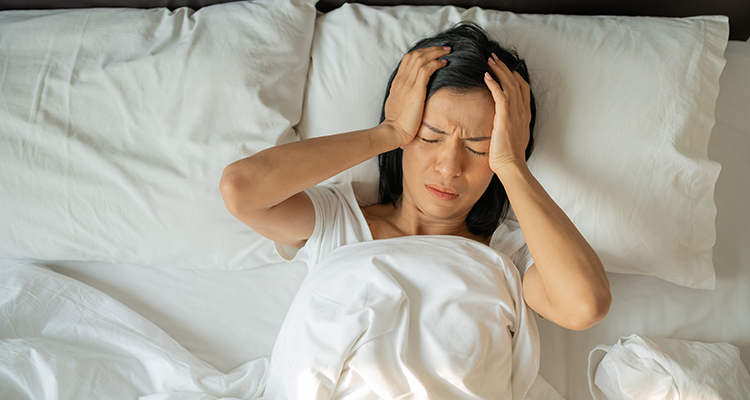
These include:
- Difficulty falling and staying asleep
- Feeling anxious or resistant about going to bed at a reasonable time
- Repeatedly waking up earlier than desired
Serious cases of insomnia also cause daytime impairments including excessive sleepiness, fatigue, mood swings, irritability, and difficulty with concentration, memory, and problem-solving. These side effects can cause accidents, injury, and impaired relationships. Chronic insomnia is diagnosed when these symptoms occur more than three times per week for at least three months or more. Other, shorter sleep disruptions are considered acute or short-term insomnia.
Identifying the root cause of your insomnia is key to diagnosis and treatment, especially in older adults. By treating these primary conditions, most elderly patients can find some relief for their symptoms and enjoy better sleep.
Treating Insomnia in Older Adults
It’s recommended that aging adults get between 7 and 9 hours of sleep per night to wake to feel rested and alert. Unfortunately, there’s no quick fix for insomnia and until someone discovers the fountain of youth, there’s no way to prevent the aging process. There are, however, ways to improve your sleep quality and sleep hygiene to support longer, deeper sleep and overall better health as you age.
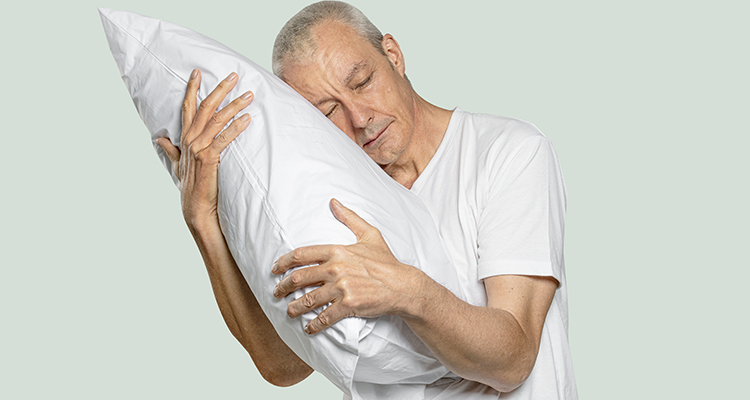
Create the Ideal Sleeping Environment
Change starts at home. In fact, it starts in your bedroom. It’s important that your bedroom is conducive to getting a quality night’s sleep. Minor changes to your environment can significantly improve how well you sleep and how fast you fall asleep.
Temperature is an important component. The ideal temperature for sleeping is 60 and 67 degrees Fahrenheit. While this may sound a bit cool, this ideal temperature facilitates a healthy REM cycle of sleep which is most important for restoring your brain and body overnight. Set your thermostat accordingly. Avoid layering on too many blankets or wearing heavy pajamas. Overheating will not only cause you to wake up frequently during the night but can trigger night sweats.
Speaking of blankets, the bedding you choose is equally as important. Stick with lightweight, comfortable materials that compliment your style. Choose a pillow that offers plenty of support for your neck and back and a mattress that does the same. If you’ve had your mattress or pillow for years, it may be time for an upgrade! Reduce noise disturbances by utilizing white noise. A sound machine or rotating fan is great for this! Eliminate excess light using a sleep mask or room darkening shades. When your bedroom is designed for sleep, you’re much more likely to fall asleep faster and enjoy deep, restorative sleep.
Sleep Therapy
There are a variety of sleep therapies that may help seniors achieve quality sleep and combat insomnia symptoms. Here are some of the most popular and widely used.
Sleep Restriction
Keeping a sleep journal is a useful tool when treating insomnia in aging adults. Entries include what time you went to sleep and woke up, how long it took you to fall asleep, and any other important information. These details help a sleep specialist identify any patterns in your sleep routine and make adjustments. Sleep restriction involves limiting how much time you spend in bed. Doing this will improve your sleep efficiency which is the ratio between the time you’re awake and the time you’re asleep. Ideally, you should be asleep for at least 90% of the time you’re in bed. Once you reach this milestone, you can start going to bed earlier and cease this form of therapy.
Stimulus Control
Stimulus control also focuses on limiting time spent in bed awake. It’s believed that lying in bed for more than 20 minutes without falling asleep can negatively impact sleep quality and trick your brain and body into thinking being awake in bed is acceptable. Stimulus control therapy works to reverse this pattern of thinking and reinforce that your bed is meant for sleep and sex only. Using this practice, patients are encouraged to get up and leave the bedroom if they aren’t asleep within 20 minutes of laying down. Once you feel tired enough to fall asleep, you can return to bed.
During the time spent out of bed, avoid turning on bright lights or performing any tasks that are stimulating or require excess energy. Instead, try Sitting quietly in another room, reading a book, or meditating. Don’t use a Kindle or tablet to read. The blue light from electronic devices will work against you and trigger alertness vs. sleepiness.
Another technique used in stimulus control therapy is avoiding long naps during the day. A short nap is sometimes acceptable but long naps or naps late in the afternoon are prohibited when using this therapy method. Patients are also encouraged to set a consistent sleep schedule that involves waking up and going to sleep at the same time each day. This helps align your circadian rhythm and establish a healthy sleep routine.
Cognitive-Behavioral Therapy
Cognitive-behavioral therapy, or CBT for short, is commonly used to treat a variety of conditions including addiction, anxiety, and insomnia. CBT for insomnia (CBT-i) helps seniors correct any negative thoughts and feelings associated with sleep. For example, if you’re feeling particularly anxious and stressed about your lack of sleep, this will create a negative attitude and approach to improving sleep and have adverse effects on the recovery process. CBT-i can also identify misconceptions or incorrect information you may have about sleep and insomnia. By replacing these negative thoughts and beliefs with more informed, positive ones, you can face your insomnia with a more proactive mindset, increasing your chances of success.
Light Therapy
Exposure to sunlight does more than just give you your daily dose of vitamin D. It synchronizes your body’s sleep-wake cycle (circadian rhythm) which is vital to achieving quality sleep at night. Most older adults don’t get enough natural sunlight during the day. This is especially true for those who are ill, have difficulty moving around, or are in an assisted living facility or hospital. Elderly individuals are also more likely to go to bed early, even further limiting daylight exposure. This lack of sun exposure negatively interferes with your ability to fall and stay asleep. Light therapy can help.
Exposing yourself to bright lights in the morning and during specific times in the evening can help you stay awake longer. When you go to bed slightly later at night, you’re more likely to feel tired enough to sleep. You’ll also fall asleep faster and wake to feel more alert and rested.
Sleeping Pills and Medications
If the above-mentioned sleep therapies and lifestyle changes are unsuccessful, your doctor may recommend certain sleeping pills and medication to help treat your insomnia. Because many elderly patients are already on medication for other ailments or are more sensitive to adverse side effects, choosing the best sleep aid takes time, research, and consideration. Certain medications can cause confusion or hypnotic effects that increase the risk of falls and injuries. Benzodiazepines and non-benzodiazepines are both known for their hypnotic side effects as well as a high risk of dependency and severe withdrawal symptoms. Low-risk sleep aids are best for aging adults in need of insomnia relief.

Adopt Healthy Behaviors
Leading a healthy lifestyle becomes increasingly important as you age. Maintaining a healthy weight that includes regular physical activity and a balanced diet promote a strong immune system, prevent injury, and may also prevent a myriad of medical conditions from heart disease and diabetes to certain cancers. Adopting healthy behaviors can also improve your sleep and help ease insomnia symptoms.
Avoid eating large meals too late in the day or right before bed. This can not only cause gastrointestinal discomfort (gas, heartburn, bloating), but it triggers your body to be alert and start digesting the heavy foods you just ate. Instead, opt for an early dinner and a light snack about 60 minutes before bed. A cup of soothing tea is another great option. Camomile tea acts as a mild sedative, promoting relaxation and sleep. Avoid caffeine before bed or too late in the day. This includes coffee, tea, and other foods and beverages.
Getting plenty of physical activity is a must for older adults. Stick with low-impact activities and exercises that promote flexibility, bone strength, and circulation. Yoga, pilates, and walking are all great choices. Start your day off with exercise. Not only does this promote alertness but it will make you feel more tired and prepare for sleep at night. Avoid exercising too close to bedtime which may lead to unwanted arousal.
There is Hope for Elderly Adults with Insomnia
Insomnia is all too common among aging adults. As your body changes both mentally and physically, achieving quality sleep becomes increasingly difficult. By identifying and understanding your triggers, you can make minor changes to your routine and habits that will have a big impact on your sleep and overall health.
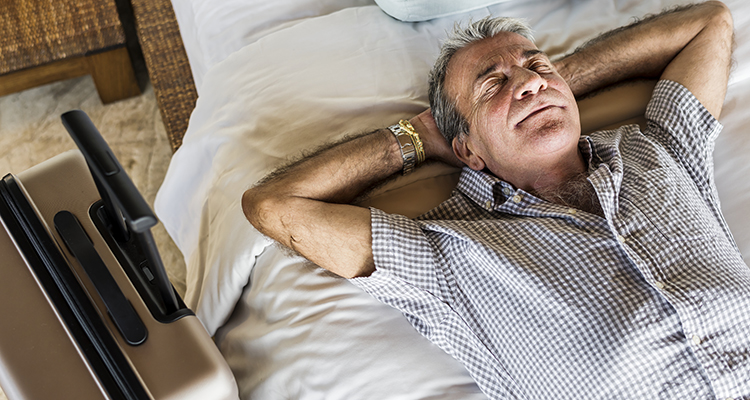
Somnus Therapy is a valuable tool for treating insomnia from the comfort of your home. Our team will help you identify and accept your insomnia diagnosis and offer a variety of insomnia treatment and therapy options to accommodate your specific needs. Let us help you improve both your sleep quality and your life!

